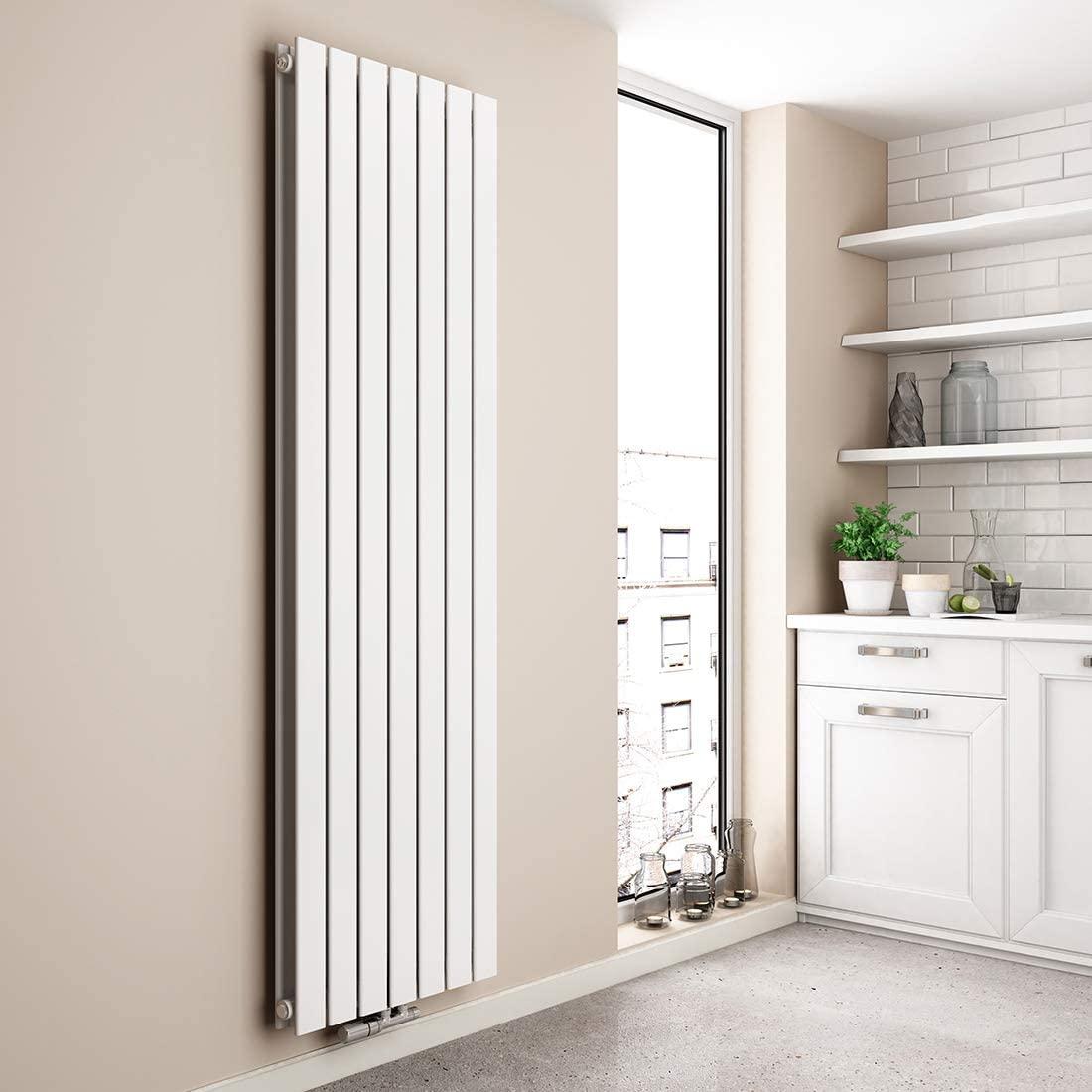Features of the placement and installation of heating radiators
Click:257 / Publish:2023-05-07 11:12
heating radiators are installed under the window, but there is no window sill. Then finishing work begins in such an apartment. Most residents have little understanding of the design and operation of the heating system. Many apartment owners do not know and do not even want to know how the heater gives off heat to the room air, that is, it heats the apartment.

Photo 1. Installing a radiator under a window
It is known that when the outdoor air temperature is lower than indoors, heat losses occur through the external enclosing structures. At the same time, the air temperature tin the room and the temperature of the internal surfaces of the external tvp.n fences decreases, that is, the conditions of thermal comfort worsen, which is unacceptable according to sanitary and hygienic standards.
To create the required thermal regime in residential buildings, their heating is provided in order to compensate for heat losses. It should be noted that the heating of buildings differs in the type of heat exchange between the room air and the internal surfaces of the building envelope. Residential buildings can be heated by convective or radiant heating. With convective heating, the air temperature tv is higher than the temperature of the inner surfaces of the outer fences tvp.n, that is, tv > tvp.n. If tv < tvp.n, then heating is called radiant.
When installing a convective heating system, the air is heated by heaters installed indoors, and the inner surfaces of the fences are heated by the air of the room, while the temperature of the inner surfaces of the outer fences will be lower than the air temperature. The inner surfaces of the fences are additionally heated by radiant heat exchange with heating radiators and among themselves. With radiant heating, the temperature of the internal surfaces is higher than the air temperature, that is, tv < tvp.n takes place.
Enclosing structures receive heat from an internal source (heating panel), which can be located in the floor, ceiling or wall. That is, heating panels heat the internal surfaces of the enclosing structures, which do not have their own internal source of heat, and the air in the room.
When installing convective and radiant heating, the requirements for the microclimate of residential buildings according to [1] are reduced to the mandatory and strict maintenance of two parameters in the cold season in all rooms: the temperature of the indoor air tw and the temperature on the inner surfaces of the outer enclosing structures tvp.n.
With centralized heat supply from a CHPP or from a district boiler house, the heating system consists of three main elements: an individual heating point, heating radiators and pipelines. The pipelines supply the coolant (water) to each heating device.
An individual heating point (ITP) is used to prepare a heat carrier (water) with the required parameters - first of all, the water temperature required for a particular heating system is maintained. An individual heating point connects the heating system to the heating network.
heating radiators (bimetallic, cast iron and steel panel radiators, convectors, etc.) are heat exchange radiators and ensure the transfer of heat from the coolant to the air of the heated room.
The transfer of heat from the coolant (water) to the room air is carried out through the wall of the heating radiators.
The process of heat transfer from the coolant to the inner wall of the device is carried out by convection and thermal conductivity: through the wall of the device - by thermal conductivity, and from the outer wall into the room - by convection, radiation and thermal conductivity.
Note that the proportion of heat transferred by thermal conductivity is small, so it is customary not to take it into account in calculations. Radiant heat transfer is the transfer of energy in the form of electromagnetic waves of various lengths. Electromagnetic radiation propagates from the outer surface of the heater in a straight line in all directions and practically does not linger in the room air (that is, it does not heat the air). Getting on the internal surfaces of the room (walls, floor, ceiling, furniture, etc.), radiant energy is partially absorbed by the surface and converted into thermal energy.
In this case, these surfaces heat up and, in turn, begin to radiate thermal energy, which falls on colder surfaces and heats them. At heated surfaces, as a rule, convective heat is formed. As a result of several absorptions and reflections, thermal energy is distributed among all fences and objects in the room. The amount of radiant energy that is absorbed by, for example, a wall or floor depends on many factors; the rest of the radiation is reflected or transmitted through the surface.
Convective heat transfer is the process of heat transfer between the surface of a solid body and a gas (liquid) medium, and heat transfer during convective heat transfer is carried out by the action of heat conduction and convection.
Convective heat transfer from heating radiators
rum is carried out as follows. The room air, in contact with the surface of the heater, heats up, the air density decreases, and it rises, and colder air flows in its place, which also warms up and begins to move upward, etc. This is how air moves (mobility) in the heated room.
Practical Conclusions
To carry out effective convective and radiant heat exchange between the heater installed in the room and the air in the room, it is necessary to ensure the natural movement of air from all sides of the heater and the passage of electromagnetic waves from the radiating surfaces to the inner surfaces of the enclosing structures of each room. To do this, it is necessary to carry out an open installation of the device - without guards, except in cases where the guard is necessary in order to protect against burns (for example, in the presence of high pressure steam or other requirements).
It is unacceptable to install protective shields, wide window sills, cabinet shelters near heaters, to reduce (more than those recommended by building codes [1]) the distance from the surface of heaters to enclosing structures. Do not install heaters in niches with a depth of more than 130 mm. Failure to follow these and other recommendations can reduce the overall heat output of the heater by 10-20%, and sometimes more.
This will reduce the room temperature by 2-7°C. Heaters should be placed under windows. In this case, the temperature of the inner surface of the outer wall and window increases, and cold air currents from windows and outer walls decrease towards the floor of the room.
heating radiators should not be placed in cabinets, blocked by furniture, as this reduces their heat transfer by radiation and convection. According to [1], radiators should be installed at a distance of at least 60 mm from the floor, 50 mm from the bottom surface of the window sill and 25 mm from the wall surface to the heater - this is necessary so that the air can freely pass from all sides of the radiator, heated up to a certain temperature and after that participated in convective heat exchange between fences and furniture, that is, heated the room.
Below are examples of incorrect installation of heating radiators.
Photo 2
Photo 2 shows the installation of a cast-iron radiator, common for our country, under a window in a cabinet. From above, the radiator is closed by a wide window sill, and a plastic louvre grille with horizontal blinds is installed on the front (front) side (photo 2a).
There is no hole (slot) for air inlet (near the floor) in the cabinet shelter and there is no hole (slot) for heated air outlet (under the windowsill) from the cabinet shelter. Consequently, the conditions for convective heat transfer are not created. Heat transfer by convection will be very low. Heat transfer by radiation is practically impossible with such a setup. With such a “finishing” of an element of the heating system, thermal comfort cannot be expected. In photo 2b, the louvre grille is removed for clarity. A desk installed next to the radiator blocks the radiator, while convective heat transfer is noticeably reduced, and radiant heat transfer is practically impossible.
Photo 3. Installing a heater in a cabinet shelter
Photo 3 shows that a wide window sill is installed under the window, and the heater is tightly closed with three louvre grilles with horizontal blinds. The heat transfer of the heater by convection and radiation with such a “finish” is approximately no more than 20%. The air temperature in the room will be noticeably lower than normal (according to our estimates, about +10°C). Winter will come, and the owner of the apartment will have to dismantle such “beauty” in order to increase the heat transfer of the heater and thereby increase the air temperature in the room.
Photo 4. Installing the heater under a wide table
In photo 4, the heater is located under the windowsill, and the owner additionally arranged a table for the entire width of the room; the table is equipped with two bedside tables; the heat transfer of the device by convection is extremely difficult, and radiant heat transfer is limited. The air temperature under the table (according to our measurements) reaches 50°C, and in the room it does not exceed +8°C (when the outside air temperature is −25°C).
Photo 5. Installing a convector under the window in the kitchen
Photo 5 shows the installation of a convector under a window; window sill is missing. The heat transfer of the convector will be 100% if the owner of the property does not block it with built-in furniture. When installing the heating system, the convector should be installed to the right, so that the right edge of the convector and the edge of the window are on the same vertical line.
Rice. 1. Recommended installation of the radiator near the outer wall under the window (1 - window sill; 2 - radiator)
On fig. 1 shows the correct installation of the radiator against a wall without a niche. Distance from floor to device



